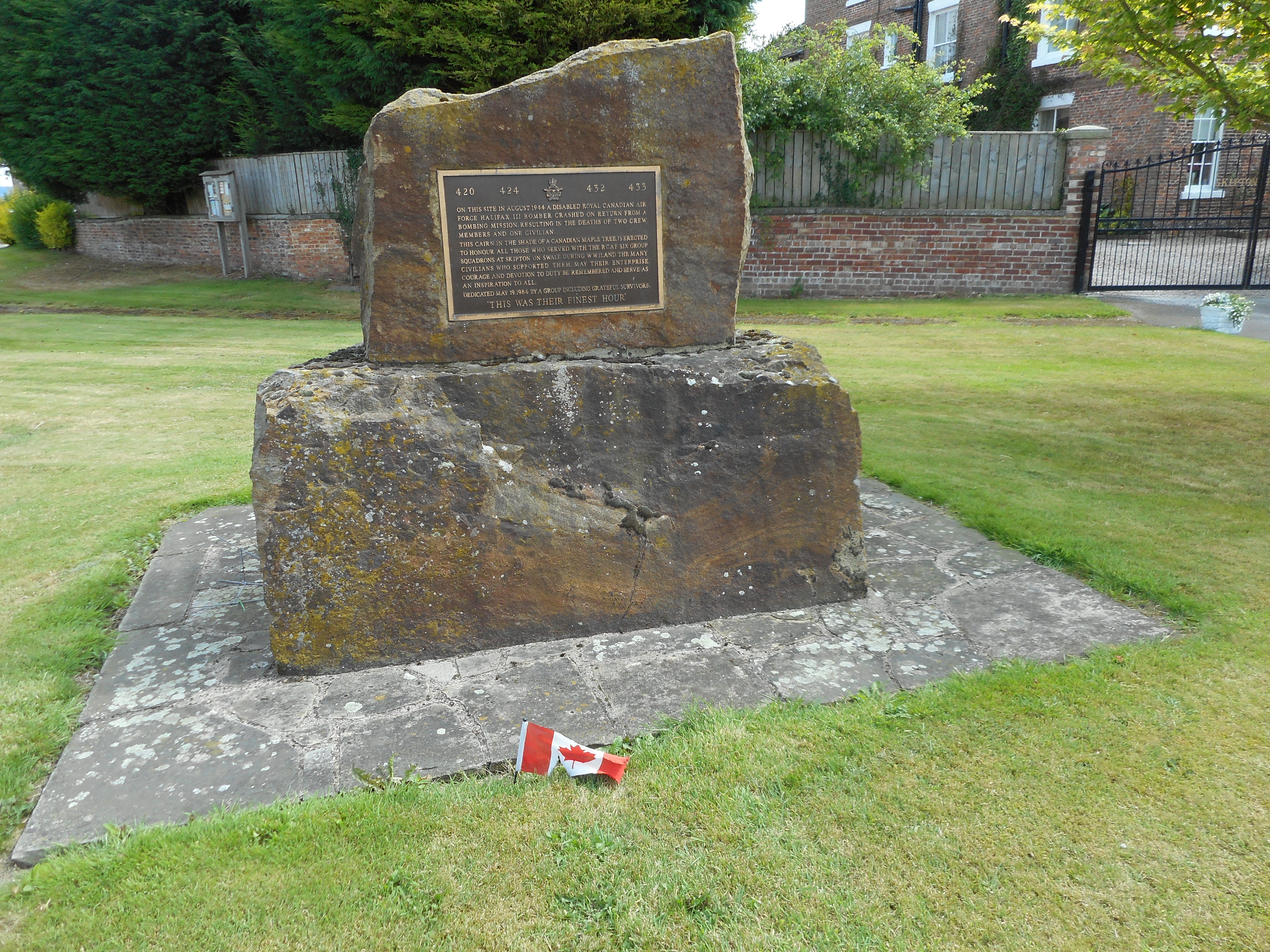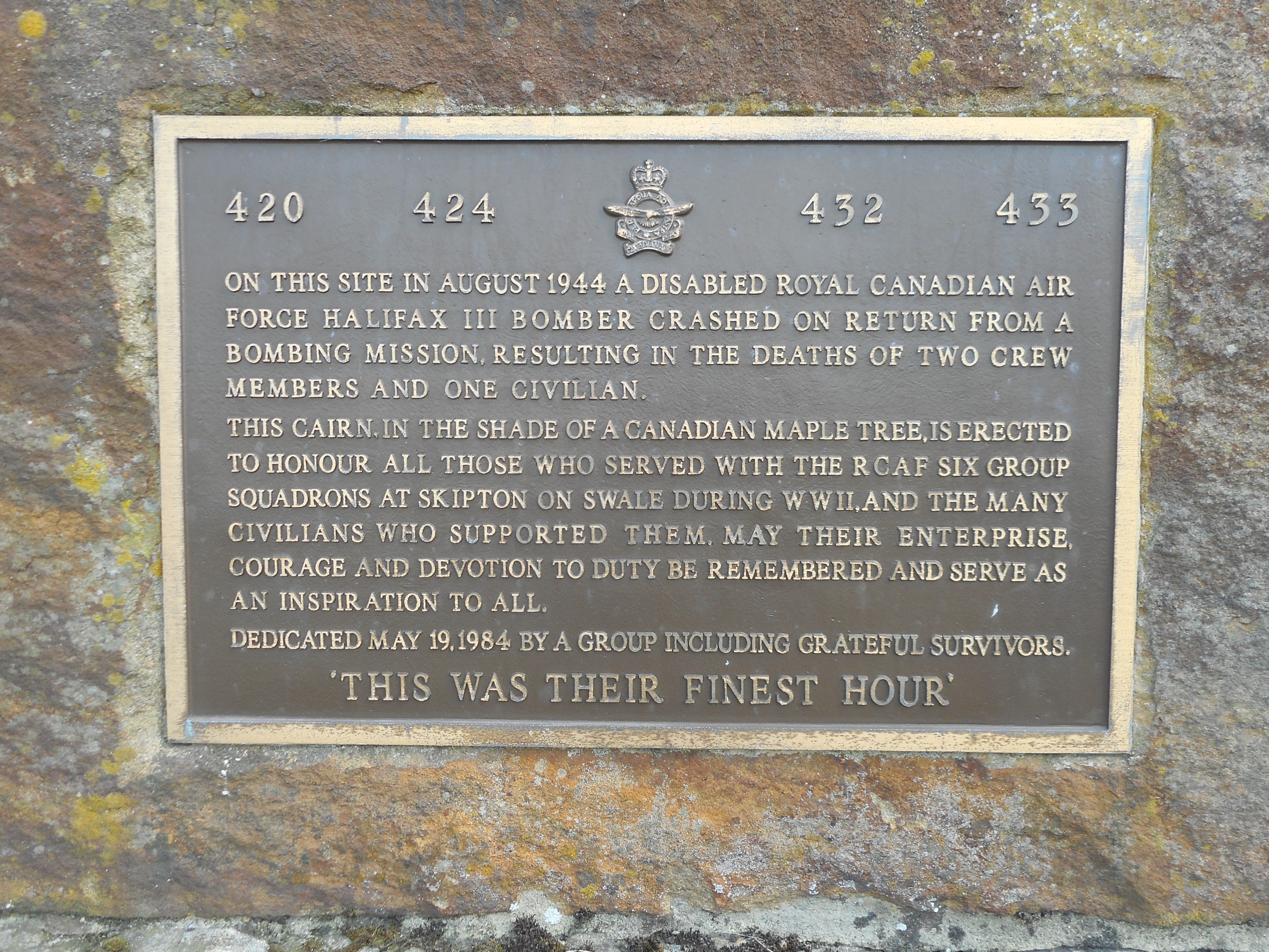Almond, John Neville
Personal Information
| Rank | P/O |
| Forename(s) | John Neville |
| Surname | Almond |
| Gender | M |
| Age | 20 |
| Date of Death | 25-05-1944 |
| Next of Kin | Son of Edwin Almond and Jennie Almond (née Hare), of Waterford, Ontario, Canada. |
Aircraft Information
| Aircraft | Handley Page Halifax III |
| Serial Number | LW157 |
| Markings | QB-S |
Memorial Information
| Burial/Memorial Country | United Kingdom |
| Burial/Memorial Place | Runnymede Memorial |
| Grave Reference | Panel 249. |
| Epitaph |
IBCC Memorial Information
| Phase | 2 |
| Panel Number | 122 |
Enlistment Information
| Service Number | J/90182 |
| Service | Royal Canadian Air Force |
| Group | 6 |
| Squadron | 424 (Tiger) |
| Squadron Motto | Castigandos castigamus (We chastise those who deserve to be chastised) |
| Trade | Air Gunner |
| Country of Origin | Canada |
Other Memorials
| Location | Village Green, Skipton on Swale, North Yorkshire |
| Country | United Kingdom |
| Memorial Type | Memorial Stone, inscribed Metal Plaque & Maple Tree |
| Memorial Text | A memorial to the Canadian personnel who served at RAF Skipton on Swale during WW2, including 424 Sqn RCAF |
Miscellaneous Information
| The three Wilsons don't appear to be related as they were from Toronto, Winnipeg and Ontario. |
| John was born on 24 June 1923 on a farm at Billingborough, Lincs. There were also four brothers and three sisters. He attended No. 12 Public School, Walpole, Ontario and High School,where he spent eight years between 1929 and 1937. From 1937 until 1941 John was farming with his father at Waterford and from that date until enlisting he worked for Slingsby Manufacturing Co., Brantford, Ontario as a Weaver. He also worked for the Cockshott Plow Co at Brantford on Aircraft assembly work. His hobby was model aeroplane building |
| Enlisting at Hamilton on 16 November 1942 and undergoing initial training, John then embarked from Halifax for the U.K. on 1 November 1943. After arrival on 9 November, John worked through 3 PRC., 61 Base 28 Feb 1944, 1666 Conversion Unit, on 8 March 1944 until reaching 424 Squadron on 18 April 1944. He was lost barely a month later. |
Commonwealth War Graves Commission
The National Archives
| Record of Events (Operational Record Book) AIR 27/1835/8 |
| Summary of Events (Operational Record Book) AIR 27/1835/7 |
Fellow Servicemen
Please note that this list gives all the losses aboard the quoted aircraft and occasionally these may have occurred on an earlier date when the aircraft was not itself lost. Please check the dates of death carefully.
Last Operation Information
| Start Date | 24-05-1944 |
| End Date | 25-05-1944 |
| Takeoff Station | Skipton on Swale |
| Day/Night Raid | Night (9% moon) |
| Operation | Aachen- to attack two railway yards. 442 aircraft, 25 Lost (5.7%). Because this raid was on German railway infrastructure rather than French of Belgian, the bomber force was considerably larger. The inevitable result was that the bombing was not as concentrated, with many bombs falling in Aachen itself. 207 people were killed, 121 seriously injured and 14800 bombed out of their homes. Nevertheless, much damage was caused to the railway yards, particularly those to the east of the town. The local report states that 288 bombs were duds, this being approximately 10% of the total dropped for the night. |
| Reason for Loss | Lost without trace |


